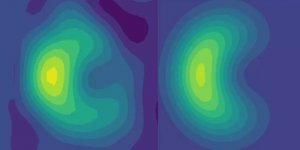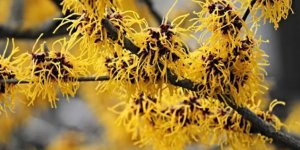| News / Science News |
Study IDs secret of stealthy invader essential to ruinous rice disease
The virulence of a rice-wrecking fungus — and deployment of ninja-like proteins that help it escape detection by muffling an immune system's alarm bells — relies on genetic decoding quirks that could prove central to stopping it, according to research from the University of Nebraska-Lincoln.

An effector protein can silence the immune responses of rice cells on behalf of a fungus that destroys enough yearly yields to feed millions of people. Photo: Margarita Marroquin-Guzman/Scott Schrage
A Nebraska team helmed by plant biologist Richard Wilson hopes that identifying an essential but formerly unknown stage in the fungal takeover of rice cells can accelerate the treatment or prevention of rice blast disease, which ruins up to 30% of global yields each year.
Most cellular machines, or proteins, are secreted in the same way. After being constructed and folded into their near-final forms at the endoplasmic reticulum, they move on to the Golgi body, which packages and forwards them along to their ultimate destinations.
But certain proteins will bypass the Golgi body in favor of unconventional, poorly understood pathways. Wilson's team has now shown that one of those unconventional pathways involves modifying not the secreted protein itself, but the genetic code of a molecule that aids in its construction.
Known as transfer RNA, or tRNA, that molecule hauls around amino acids — the building blocks of every protein — in search of a blueprint that calls for its cargo.
Those blueprints exist as three-letter codes, or codons, carried by the fittingly named messenger RNA. When a tRNA comes across and decodes an mRNA whose codon matches its own three-letter combination, it unloads its corresponding amino acid, adding it to a string of others that ultimately yield a finished protein.
Before giving up their precious cargo, though, some tRNAs undergo chemical makeovers. One especially notable modification? The addition of sulfur to the tRNA's third letter, or nucleotide — specifically when that letter is U, the nucleotide known as uridine.
Though that sulfur addition has been conserved and observed in a wide range of organisms, from yeast to mice to humans, researchers have yet to pin down all its functions.
Wilson and his colleagues decided to play an educated hunch: that the modification of the tRNA's uridine might prove important to the growth of Magnaporthe oryzae, the fungal species that causes rice blast disease.
To test its importance, the researchers resorted to the tried-and-true method of removing the genes responsible for the modification, then looking for any differences between that mutant fungus and its original counterpart.
The team discovered even more than it bargained for. Gone were some of the ninja-like proteins, or effectors, that are secreted via the unconventional pathway before infiltrating the cytoplasm of rice cells to mitigate their innate immune responses.
And when the team deposited spores from the mutant M. oryzae on rice seedlings, the effector-less fungus mustered only minuscule lesions on their leaves — lesions far smaller than those managed by the untouched, virulent fungus. (U.S. National Science Foundation)
YOU MAY ALSO LIKE





